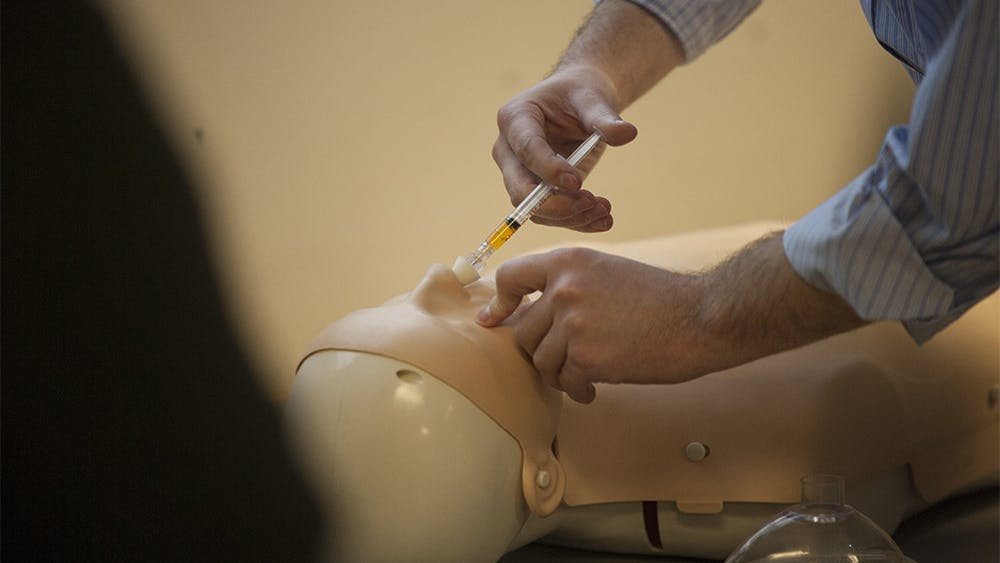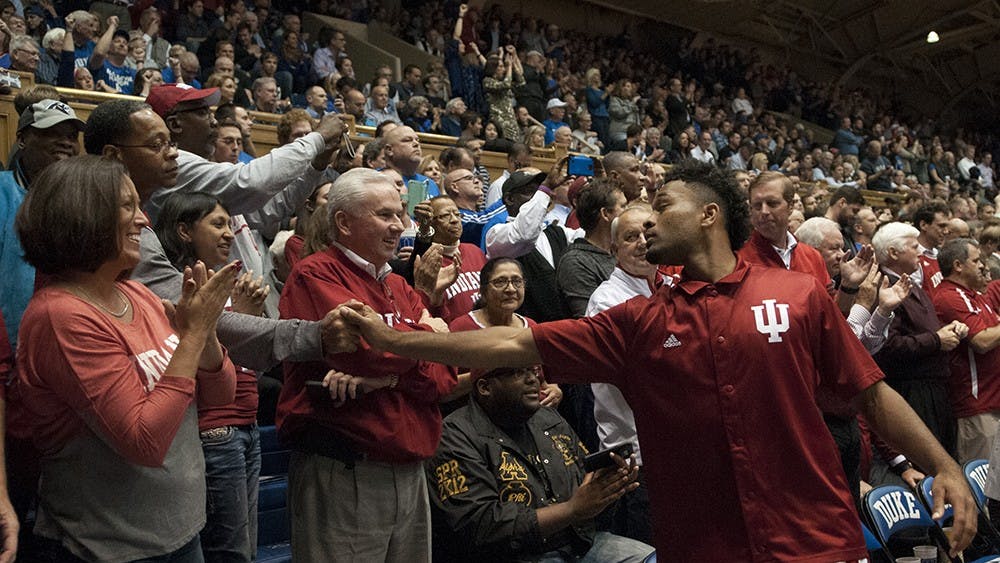The second floor of Swain Hall West was a scene of celebration Tuesday morning. Non-alcoholic champagne flowed as a TV played coverage of a scientific milestone: beams of protons collided together at energy levels of 7 trillion electron volts at the Large Hadron Collider in Geneva, three times the previous best.
While the breakthrough resulted from the efforts of thousands of scientists across the globe, IU physicists played significant roles in the collider’s creation.
“It would have been nice to be there, but instead I got up at 7:30 and watched it on my computer,” IU physics professor Harold Ogren said.
But by 1 p.m., the halls were quiet again as everyone returned to their offices, a victory accomplished, but with plenty of work still to do.
“Today was sort of the beginning of a marathon race ... and we’ve been training for a long, long time,” Ogren said.
CERN — the European Organization for Nuclear Research — built the accelerator with the intention of learning more about some of the most fundamental questions of physics, including the origin of the universe. The collider is underground in a circular tunnel with a circumference of about 17 miles close to the border between Switzerland and France.
“You have these two human hairs travelling at the speed of light, and you don’t know where they’re going until they’re been there, and you’re trying to get them to collide,” IU physicist Hal Evans said.
While a scientific breakthrough, operating at full strength with collisions at 14 TeV is still about two years off, Ogren said. But for many IU scientists, this felt like a personal victory, as they contributed to building a component called the ATLAS Detector.
“The ATLAS Detector is so huge it took 2,000 people to build,” Ogren said, adding that it’s about half the length of a football field. “We’ve been working on this for more than 15 years.”
He was happy to report that their specific part of the detector, the transition radiation tracker, or TRT, is working just fine.
Evans is working on a trigger system for the detector to tell it when to record a collision and to make it more efficient given the amount of data it creates.
The detector generates about 1,000 terabytes of information a year, said IU senior scientist Fred Luehring, and the only way to process the data is to send it all over the world. Luehring and University Information Technology Services help run one of the regional computer centers, Midwest Tier Two, with the University of Chicago. The Worldwide LHC computing grid includes 100,000 processors from more than 170 sites in 34 countries.
Because the protons cannot travel faster than the speed of light, it’s not a matter of forcing them to go faster, but putting more force behind the motion, Ogren said – similar to crashing a semi into a wall compared to a Mini Cooper, even if both are going 40 miles per hour.
“That’s what we do, we smash things together,” Ogren said. “The higher the energy, the more possibility we create particles we’ve never seen before.”
Among the things to look for is the theoretical Higgs boson, or “God” particle — a hypothetical, particle with zero electric charge whose existence would explain the masses of the elementary particles. There’s also the possibility of creating dark matter, a theorized form of matter that does not reflect or emit electromagnetic radiation.
Some worry that the experiments will create a black hole that could destroy the planet, but Ogren said that’s incredibly unlikely because all of the particles are colliding individually, though there are approximately 10,000,000,000,000 protons hitting each other. Any black hole would only have the incredibly miniscule energy of two single protons colliding.
The fact remains, though, that new data flows in every day and physicists around the world have a long way to go.
“We’re not expecting any discoveries today or tomorrow,” Ogren said.
And for scientists, the collider’s experiments are just as much about the past as the future.
“This is the Jurassic Park for particle physicists,” Phil Schewe, a spokesman for the American Institute of Physics, told The Associated Press, calling the collider a time machine. “Some of the particles they are making now or are about to make haven’t been around for 14 billion years.”
IU celebrates role in physics milestone

Get stories like this in your inbox
Subscribe





